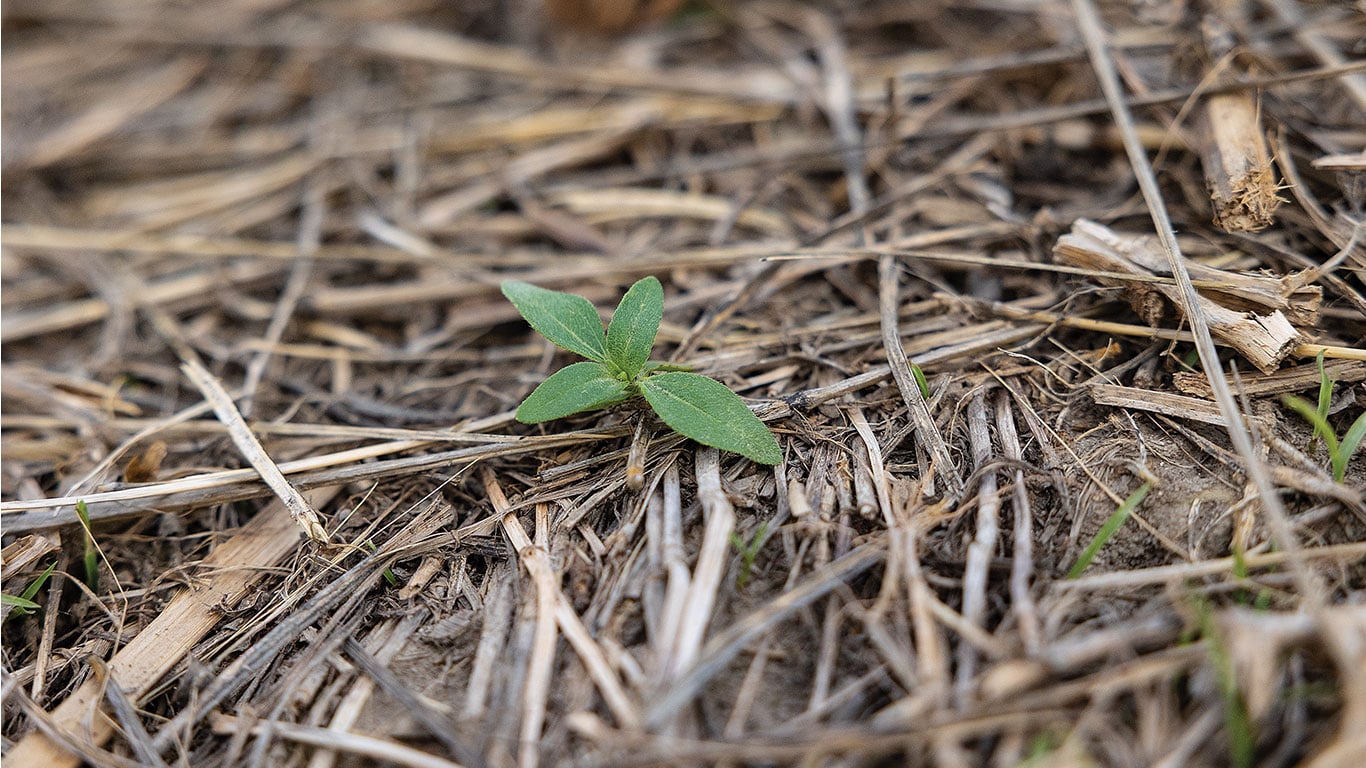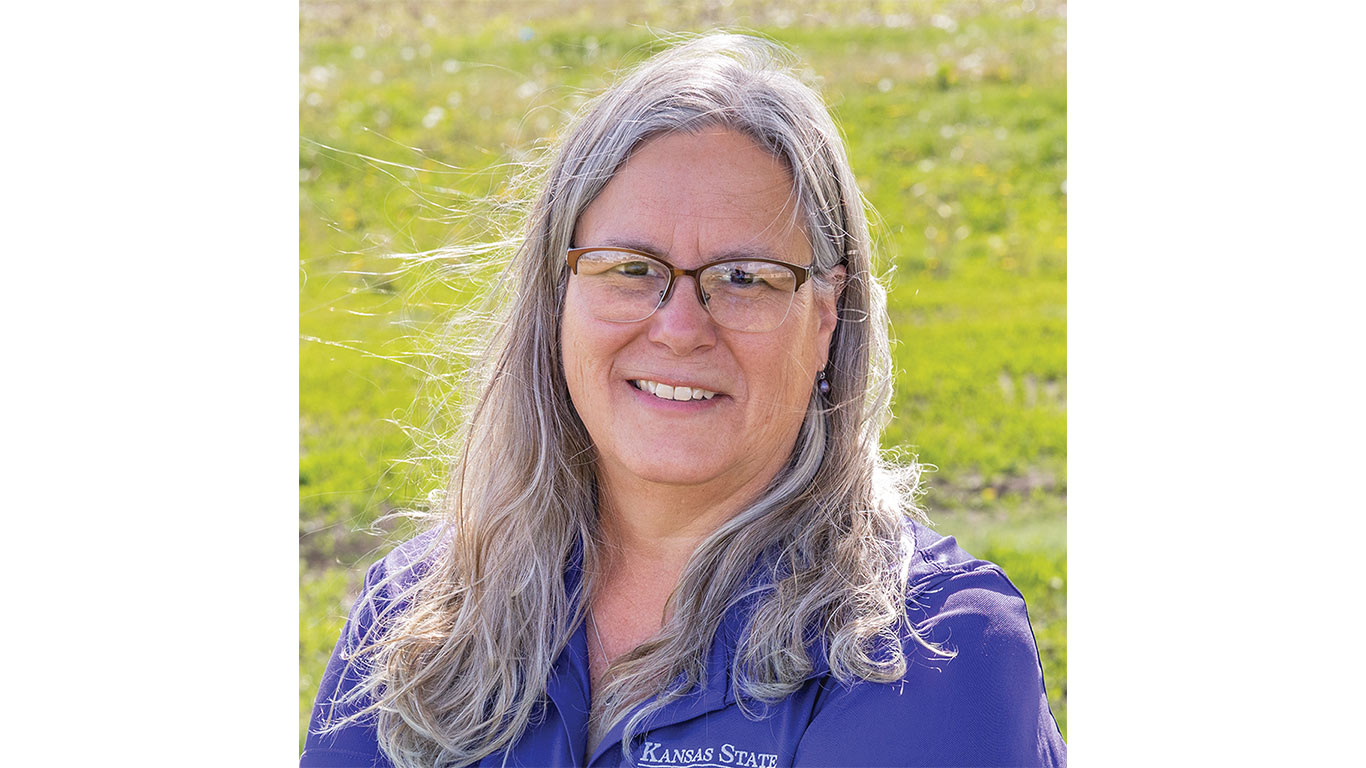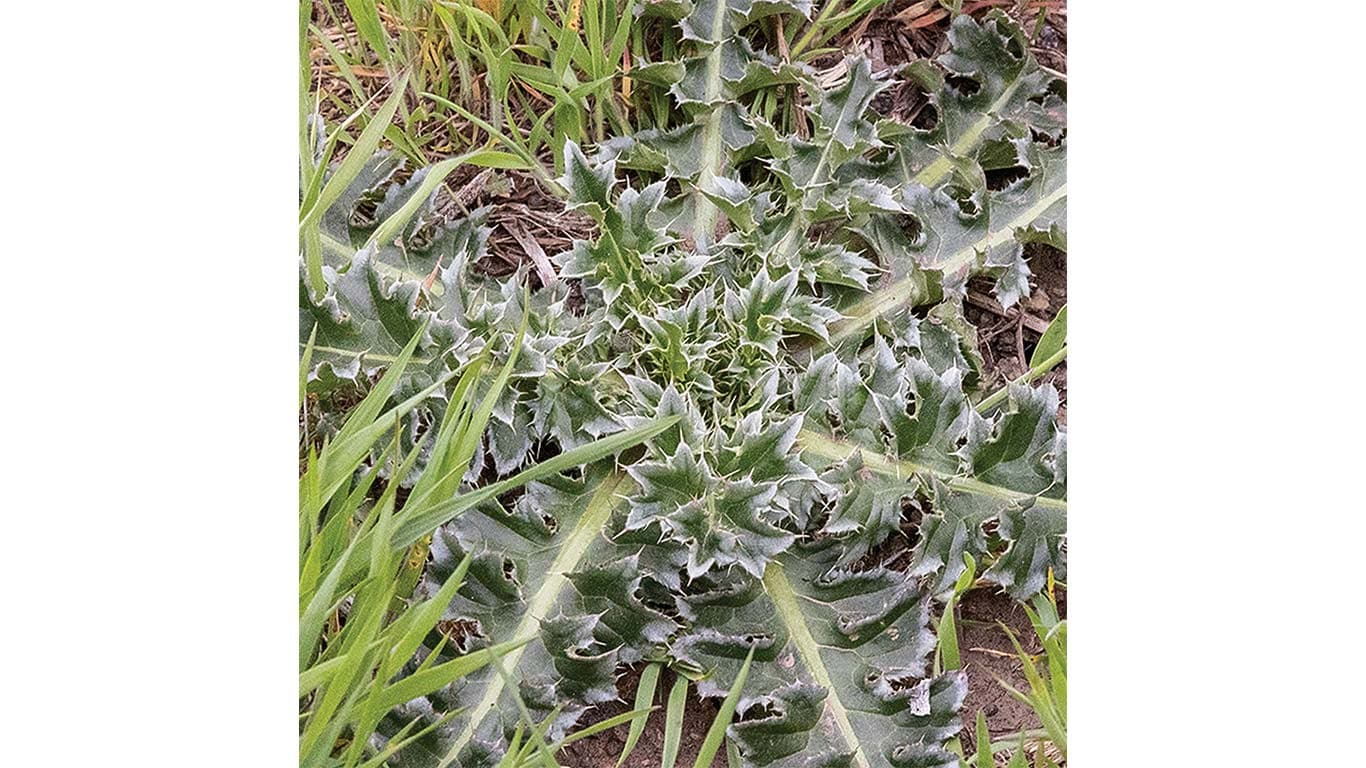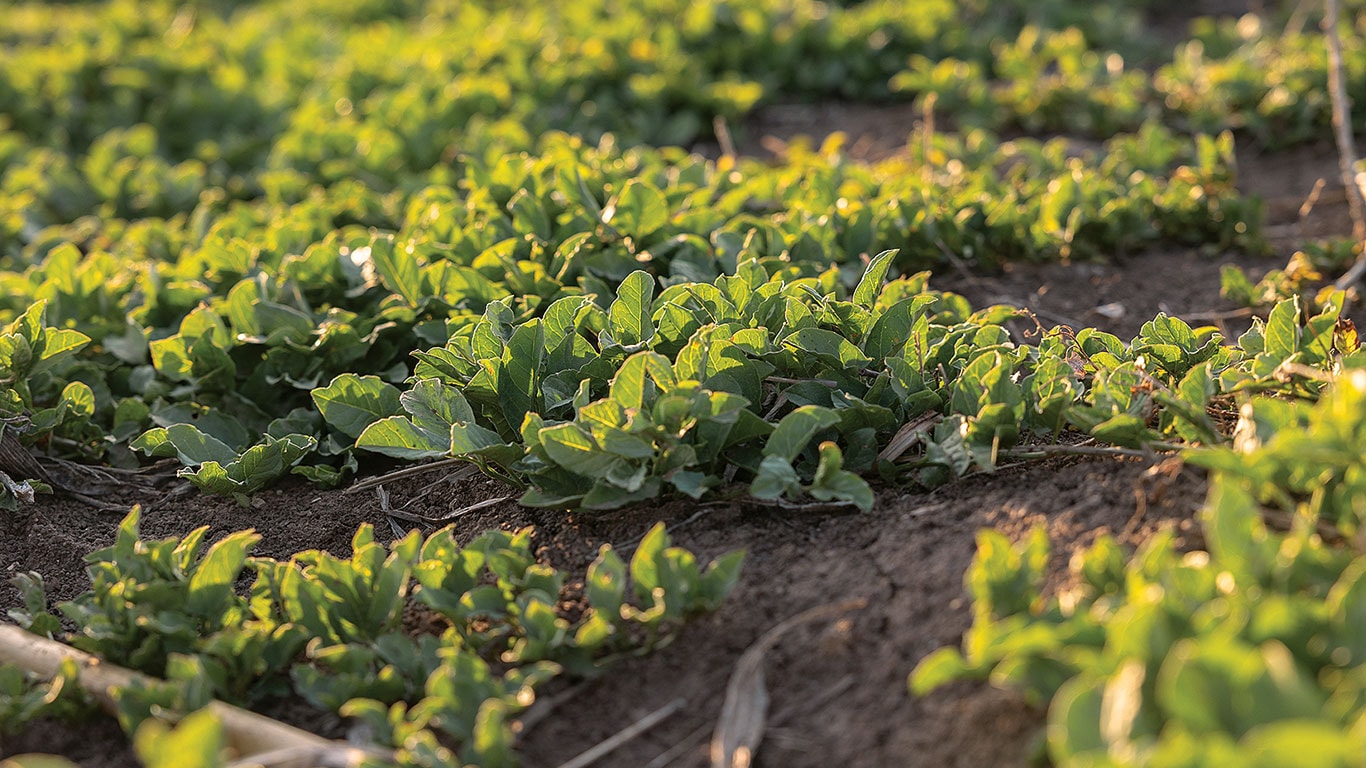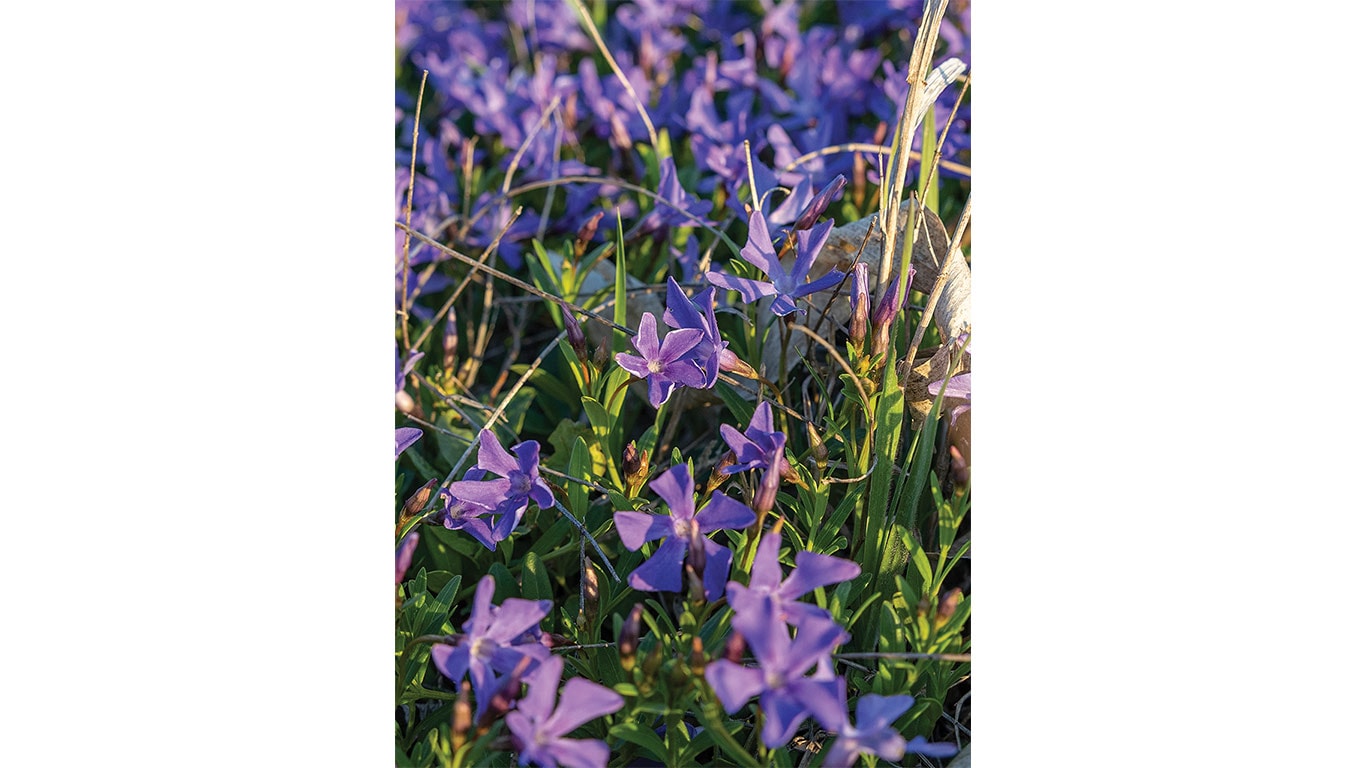Agriculture, Education November 01, 2025
What the Weeds Say About Our Soils
Weeds have a story to tell, if we know how to read it.
Story and Photos by Bill Spiegel
Neither steel nor chemistry, nor the act of human hands has bested the world's weeds. Sometimes they grow in abundance; other times a weed may be by itself.
But weeds can tell a story. Maybe it's the history of the land where the weed exists; perhaps it is one of how the land was managed. Whatever the case, there is a reason weeds persist.
Anita Dille, weed scientist at Kansas State University, explains one scenario.
"Our ancestors managed small fields. Eventually, we took out all the fences and conglomerated those fields," she says.
But the legacy of those small fields may still linger. Perhaps the cattle and hogs were fed in an area that still has a high phosphorus load, and weeds are still responding to that snapshot in time.
"We try to manage the field as a whole, but there is a legacy effect in some cases," Dille says.
In this tale of weeds, we will be accompanied by the observations of John Burroughs, an essayist who wrote prolifically about weeds in the latter half of the 1800s. A disciple of Walt Whitman and Ralph Waldo Emerson, Burroughs' observations from 150 years ago still ring true today.
Reason for everything. Most weeds have their uses; they are not wholly malevolent.
"When people say a weed is just a plant growing out of place, I don't agree," says Glen Rabenberg, owner of Soil Works LLC, of Yankton, South Dakota. "To me, a weed is a guide, or an indicator there is a problem in the soil."
Prior to the 2024 planting season, fields throughout the Corn Belt were rife with the pale purple color of blooming henbit dead-nettle (lamium amplexicaule), a weed that thrives in soils with excess nitrogen, Dille says. The proliferation of henbit is due in part to how farmers are adapting their systems.
It emerges in late summer or early fall, generally when farmers are too busy to make a tillage or herbicide pass for just one weed.
"Some people use it as a cover crop because it doesn't grow very tall and covers the soil," she explains. "And you can see how much residual nitrogen you have if the henbit is dark green and flowering."
Above. Glen Rabenberg says weeds are Mother Nature's way of "covering the soil with something." Russian thistle occurs in unbalanced soils. Anita Dille, weed scientist at Kansas State University. Dandelions naturally break up soil compaction. Sunflowers' deep tap roots scavenge nutrients. Berliander's goosefoot is a sign of well-drained, nutrient-laden soils. Garrett Kennedy, field agronomist at Pioneer Seeds.
Nature's makeshift. Weeds are Nature's makeshift. She rejoices in the grass and the grain, but when these fail to cover her nakedness, she resorts to weed.
Worked ground doesn't stay bare for long. That's because Mother Nature always wants to cover the soil, Rabenberg says.
Take the musk thistle, for example. It came to the U.S. in the 1850s from Eurasia, and has since spread across the U.S. and Canada where it flourishes in rangeland. In many states, it is considered a noxious weed.
"Musk thistle tends to show up in areas that have been overgrazed," Dille explains. "A weed tends to find those open spaces and fills in the gaps."
Garrett Kennedy, field agronomist for Pioneer® Seeds, adds that musk thistle is there for a reason. "It is telling us that the soil is looking for diversity," he says.
Tansy mustard is an opportunistic weed, Dille adds. When winter wheat has thin stands, you may see the yellow blooms of tansy mustard in late spring, when the cash crop begins to head out. Like wheat, tansy mustard is a winter annual, with the same growing calendar. But if there are thin spots in the field, tansy mustard will take hold.
"When wheat isn't competitive, sunlight finds the tansy mustard, which uses the resources wheat is unable to use, and starts growing," Dille says.
Field bindweed is another opportunistic weed. For years, it was controlled by tillage, crop rotation, or timely herbicide passes.
As farmers have trended towards reduced tillage and narrower crop rotations, weeds like bindweed have adjusted accordingly.
"When we're not spraying in the fall and getting herbicide down to the bindweed roots, some of those deep rhizomes that have been there forever start creeping up again," Kennedy says.
Take no-till corn and soybeans, for example. Grass species are dominant in those environments because soil disturbance tends to be shallow and grassy weeds thrive on or close to the soil surface.
With tillage, however, seeds that emerge from deeper in the surface can thrive: velvet leaf, sunflower, giant ragweed, ragweed, and cocklebur, for example.
Those kinds of weeds need to be in the soil where they aren't as susceptible to predation or critters eating them," Dille says. "Different environments help different species be more successful."
Above. In the High Plains, kochia thrives in well-drained soils that have high pH; each plant can produce 15,000 seeds. Field bindweed thrives in no-till systems and requires control methods that penetrate its root system. Musk thistle has a deep taproot and does well in fertile soils. Beware unintended consequences: this patch of the ornamental flower Glory of the Snow has spread into native grass pasture, compromising grazing quality. Though he doesn't consider tansy mustard a major problem in crop production, Garrett Kennedy believes the presence of mustards is nature's way of introducing diversity into monoculture cropping systems.
Great travelers. Weeds are great travelers; they are, indeed, the tramps of the vegetable world. They are going east, west, north, south; they walk; they fly; they swim; they steal a ride; they travel by rail, by flood, by wind; they go underground and they go above, across lots, and by the highway.
Weeds love a free ride.
In the High Plains, farmers have been known to remove field bindweed from the shanks of tillage tools to keep from transporting the viney weed from one field to the next.
During wheat harvest, custom harvesters are often asked to wash their combines before starting work on a new client, just to keep one farmer's weed problems from spreading.
In 2015 Kevin Bradley, weed scientist at the University of Missouri, examined the digestive tracts of 350 migratory ducks and geese to see if they contained weed seeds. Bradley's team counted more than 14,000 intact weed seeds in the waterfowl, including pigweeds and barnyard grass.
According to the Weed Science Society of America (WSSA) weed seeds may be found on tires, bumpers and wheel wells of vehicles, or can crisscross the country in a package of wild bird seed. Understanding weed seed disbursement is an important part of weed science, Dille says. Dandelion seeds are designed to catch wind, which is why they spread so far and so fast.
"Pennycress tends to stay local because the seeds stay where they fall," she says. The WSSA notes that tiny seeds, such as horseweed, can move up to 300 miles by air.
That contrasts with kochia, a tumbleweed that moves via wind across open fields each winter throughout the High Plains. The average kochia plant will roll about half a mile, dropping thousands of seeds in its wake.
Almost human. One is tempted to say that the most human plants, after all, are the weeds.
Just like farmers' cultural practices have evolved, so too have weed challenges, Kennedy says.
Three generations ago, the moldboard plow turned over thick layers of soil and generally, only large-seeded, robust weeds could emerge from those tillage passes. As shallow tillage tools were adopted, a cornucopia of large- and small-seeded weeds thrived. Now, tools like no-till, ridge-till, and cover cropping bring about new and different challenges. Thus, keeping weeds at bay may require a more holistic thought process, he adds.
"As weed control has become more challenging lately, with more herbicide resistance concerns, I think we have to think through it a little bit differently." Farmers can no longer spray a field and walk away, Kennedy says. Controlling weeds is like a game of chess, in which participants need to think a few moves ahead.
"Margins are tight and commodity prices are low, so we've got to look at other ways to think outside the box. Cultural control is one of those," he explains. Can a tweak to the nitrogen management program ensure the cash crop—not a weed—uses the nitrogen? Can we build residue on headlands to prevent edge-of-field weed populations?
To be clear, not every weed has a specific purpose. Sometimes, a weed's initial presence is just a random act of Mother Nature. But why did it thrive? Is it compaction, or soil pH? Or maybe excess fertility after the cash crop. Understanding the weed's strengths and weaknesses and looking for clues is imperative.
"That goes back to looking at the whole system approach: figuring out why that weed is here and what are things we can do to prevent it," Kennedy says. ‡
Read More

AGRICULTURE, AG TECH
Tech@Work
Hacker Heroes: John Deere's Bug Bounty program boosts cybersecurity.

AGRICULTURE, EDUCATION
The Protein Turning Heads and Herds
The milk of the 1990s is not what we're making anymore.




